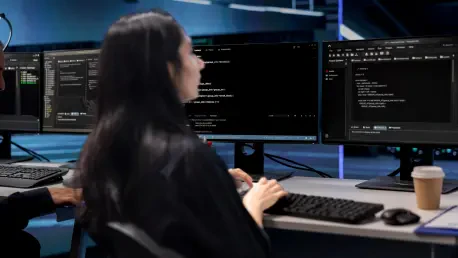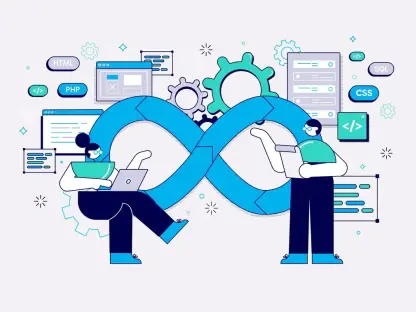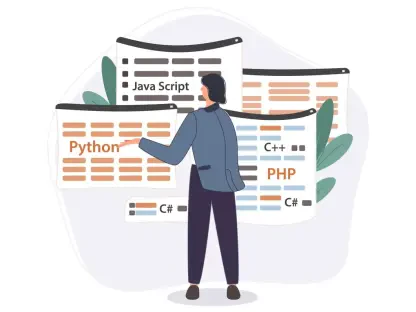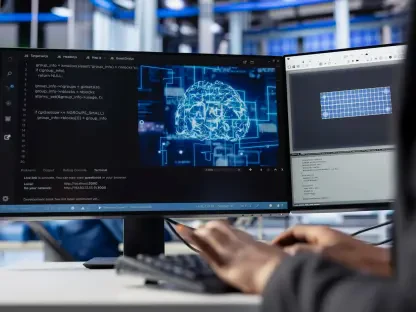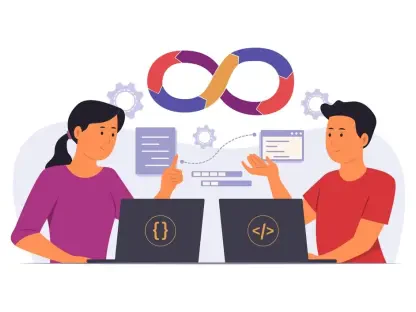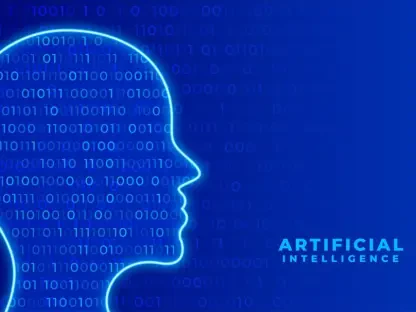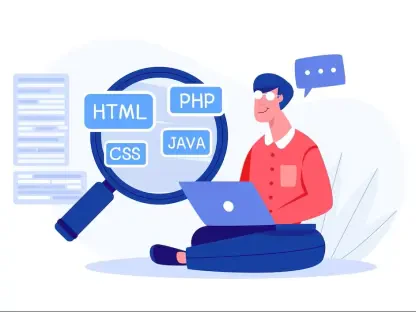Introduction to the AI Coding Revolution
In an era where software development is undergoing a seismic shift, AI-assisted coding tools have emerged as indispensable allies for developers worldwide, promising to slash development time by up to 40% according to recent industry estimates. Platforms such as GitHub Copilot, Cursor, Claude Code, Codex, and Windsurf are no longer just novelties but core components of modern coding workflows, empowering teams to tackle complex projects with unprecedented speed. However, this rapid integration of AI into software creation has unveiled a darker side—security vulnerabilities in AI-generated code that often slip through undetected, posing substantial risks to production environments. This report delves into Cisco’s groundbreaking response to these challenges through the open-sourcing of Project CodeGuard, a framework designed to fortify AI coding practices.
The current landscape of software development reveals a staggering adoption rate, with over 60% of professional developers utilizing AI tools in their daily tasks, driven by market leaders like Microsoft, Anthropic, and OpenAI. Despite the productivity gains, the industry grapples with a critical oversight: the absence of robust security protocols tailored for AI-generated outputs. This gap has spurred Cisco to take a proactive stance, aiming to redefine how security integrates with innovation in this fast-evolving domain.
The Rise of AI-Assisted Coding and Its Security Challenges
AI coding assistants have transformed the software development ecosystem by automating repetitive tasks, suggesting optimized solutions, and even drafting entire codebases from natural language prompts. Their ability to enhance efficiency has made them a staple among developers, with tools like GitHub Copilot leading the charge in integrating seamlessly into popular IDEs. The market for these solutions continues to expand, fueled by continuous advancements from key players who are pushing the boundaries of what AI can achieve in coding.
Yet, beneath this wave of innovation lies a pressing concern—the security of the code these tools produce. Vulnerabilities such as insecure defaults, missing input validation, and hardcoded secrets are alarmingly common in AI-generated outputs, often evading traditional detection methods. As adoption surges, the industry faces the stark reality that speed and convenience cannot come at the expense of safety, highlighting an urgent need for frameworks that address these inherent weaknesses.
This disparity between rapid tool uptake and lagging security measures has created fertile ground for potential exploits, with undetected flaws frequently finding their way into live systems. The challenge is clear: how can the development community harness the power of AI without compromising the integrity of their applications? Cisco’s latest initiative seeks to bridge this divide, offering a tangible solution to a problem that threatens to undermine the very benefits AI promises.
Understanding Project CodeGuard: A Solution for Secure AI Coding
Core Features and Functionality
Project CodeGuard, recently open-sourced by Cisco, stands as a pioneering framework aimed at embedding security directly into AI-assisted coding workflows. This internal tool, now accessible to the global developer community, comprises community-driven rules, translators compatible with major AI platforms, and validators that enforce security automatically. Its design ensures that security is not an afterthought but a fundamental aspect of the coding process, guiding developers from the initial design phase through to post-generation reviews.
The framework operates across multiple stages of the AI coding lifecycle, including product planning, code creation, and final validation, providing a holistic approach to safeguarding outputs. For example, specific rules target common pitfalls like improper input validation by prompting secure practices during code generation and flagging issues in real time. Similarly, secret management protocols prevent the inclusion of hardcoded credentials by detecting sensitive data patterns and enforcing secure storage methods, thus reducing exposure risks.
By integrating these protective measures, CodeGuard empowers AI tools to adhere to secure coding patterns without sacrificing the efficiency that makes them valuable. This multi-layered strategy not only mitigates immediate threats but also educates developers on best practices, fostering a culture of security awareness. As a result, the framework addresses vulnerabilities at their source, ensuring safer outcomes in an increasingly AI-driven development landscape.
Current Capabilities and Future Roadmap
Version 1.0.0 of CodeGuard offers a robust starting point, featuring core security rules aligned with OWASP and CWE standards, seamless integration with popular tools like Cursor and GitHub Copilot, and extensive documentation to ease onboarding for contributors. These elements provide a solid foundation for developers seeking to secure their AI-generated code, ensuring alignment with established security benchmarks. The framework’s initial release prioritizes usability, allowing immediate implementation across diverse coding environments.
Looking ahead, Cisco has outlined an ambitious roadmap to enhance CodeGuard’s capabilities over the coming years, from this year to 2027, with plans for expanded language support and broader platform compatibility. Future updates will introduce automated rule validation, context-aware suggestions tailored to specific project needs, and mechanisms to maintain consistency across varied AI agents. These advancements aim to minimize manual configuration, making the tool more accessible to a wider audience.
Additionally, planned features include feedback systems to refine rules based on real-world application, ensuring the framework evolves in response to emerging challenges. This forward-thinking approach underscores Cisco’s commitment to not just addressing current security gaps but anticipating future needs. By continuously refining CodeGuard, the initiative seeks to remain a cornerstone of secure AI coding practices in an ever-changing technological landscape.
Addressing the Security Gaps in AI-Generated Code
AI-generated code, while revolutionary, often harbors critical flaws such as weak cryptographic implementations, outdated library dependencies, and insufficient input sanitization. These issues, if left unchecked, can lead to severe consequences, including data breaches and system compromises in production settings. The inherent unpredictability of AI outputs exacerbates the problem, as traditional testing methods may fail to catch nuanced errors introduced by automated suggestions.
Project CodeGuard steps in as a vital defense-in-depth layer, proactively identifying and mitigating these risks through its rule-based system and automated validations. While it significantly reduces the likelihood of common vulnerabilities, Cisco acknowledges that the framework is not a cure-all. Human oversight, coupled with established practices like peer code reviews, remains essential to ensure comprehensive security and compliance with organizational standards.
This balanced approach highlights the importance of integrating innovative tools with conventional safeguards. CodeGuard serves as a first line of defense, catching errors that might otherwise go unnoticed, yet it encourages developers to maintain vigilance. By addressing immediate security gaps while advocating for broader protective strategies, the framework paves the way for a more resilient AI coding ecosystem.
Community Collaboration and the Open-Source Advantage
Cisco’s decision to open-source CodeGuard reflects a strategic emphasis on community engagement as a catalyst for enhancing the framework’s effectiveness. By inviting contributions from security engineers, developers, and AI researchers, the company aims to build a diverse pool of expertise to tackle the multifaceted challenges of AI coding security. Opportunities abound for individuals to submit tailored rules, develop translators for additional tools, and provide feedback on potential improvements or issues.
This collaborative model not only accelerates the framework’s evolution but also positions it as a potential industry standard for secure AI-assisted coding. The open-source nature allows for rapid iteration, as contributors worldwide can address niche vulnerabilities specific to different languages or frameworks. Such inclusivity ensures that CodeGuard remains relevant across varied development contexts, fostering widespread adoption.
Moreover, community involvement creates a shared responsibility for security, encouraging a collective effort to refine and expand the tool’s capabilities. As more stakeholders participate, the framework benefits from a richer set of perspectives, driving innovation in rule creation and integration techniques. This synergy between Cisco’s vision and global collaboration holds the promise of transforming how security is woven into AI-driven development practices.
Future Outlook for Secure AI Coding Practices
The software development industry stands at a pivotal juncture, striving to balance the transformative potential of AI with the imperative of robust security. Initiatives like CodeGuard signal a shift toward proactive measures that anticipate vulnerabilities rather than merely reacting to breaches. As AI tools continue to evolve, frameworks that embed security from the outset are likely to become integral to maintaining trust in automated coding solutions.
Predictions suggest that open-source projects will play a central role in shaping the trajectory of AI-assisted coding, particularly as new vulnerabilities emerge with advancing models. Regulatory changes and increasing scrutiny on data protection may further influence how secure coding frameworks are designed and implemented. Adaptability will be key, ensuring tools like CodeGuard can respond to both technological and legal developments in the coming years.
Potential disruptors, such as the rise of more sophisticated AI models or shifts in compliance requirements, underscore the need for continuous improvement. Global collaboration will remain a cornerstone of sustaining secure and efficient coding environments, enabling the industry to stay ahead of threats. By fostering an ecosystem of shared knowledge and innovation, the future of AI coding can prioritize both progress and protection.
Reflecting on a Milestone for Safer Development
Cisco’s open-sourcing of Project CodeGuard marked a significant stride in confronting the security challenges inherent in AI-generated code, setting a precedent for industry-wide responsibility. The framework’s introduction provided a proactive layer of defense, seamlessly blending security with the productivity gains of AI tools. It stood as a testament to the power of community-driven solutions in addressing complex technological risks.
Looking back, the initiative underscored the necessity of sustained vigilance and collaboration to uphold safety in software development. Moving forward, developers were encouraged to adopt such frameworks while reinforcing traditional security practices, ensuring a comprehensive approach to risk mitigation. The industry was urged to invest in similar open-source endeavors, amplifying efforts to safeguard AI-driven innovation.
As a next step, stakeholders across the spectrum—from individual coders to large enterprises—needed to prioritize the integration of security tools into their workflows, viewing them as essential rather than optional. Continued support for collaborative projects promised to refine these solutions, adapting them to future challenges. This collective commitment was poised to establish secure AI coding as a fundamental norm, securing the digital landscape for generations to come.
